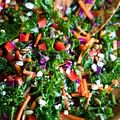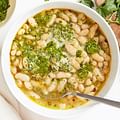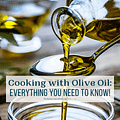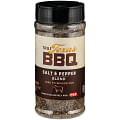Valentina Moretti is a language teacher from Florence. She helps travelers learn essential Italian phrases and understand the local slang, making their travel experience more authentic.
The nature of Italian cuisine before the discovery of the New World was primarily based on simple, local ingredients. The primary staples included olive oil, cheese, bread, and a variety of vegetables and herbs.
Step Back in Time: The Richness of Renaissance Italy's Cuisine 🍇🍷
During the Renaissance, the Italian food culture was influenced by the Greeks and Romans. Wealthy households often indulged in extravagant banquets with dishes like roasted peacock and swan. However, the common people ate much simpler meals. For example, in Tuscany, the diet was primarily vegetarian, and meals were often composed of legumes, vegetables, and bread dipped in olive oil.
Seafood was also prevalent in coastal areas like Sorrento. The Mediterranean Sea provided a bountiful supply of fresh fish, shellfish, and other seafood, which were often used in traditional Italian dishes.
Before Tomatoes: A Peek into Pre-Columbian Italian Food 🌾🍞
Before the introduction of New World foods like tomatoes, corn, and potatoes, Italian cuisine relied heavily on grains such as wheat and barley. Pasta, made from durum wheat, was a staple in many regions, although it was often served without sauce, as tomatoes had not yet been introduced.
Meat was less common in the diet, especially in inland regions where livestock farming was not as prevalent. Instead, dishes often featured locally sourced fish or wild game.
One of the most common dishes that used these ingredients was a simple pasta dish.
As you can see in this post, the pasta is flavored with olive oil and a variety of Italian herbs, showcasing the simplicity and richness of pre-Columbian Italian cuisine.
Herbs played a significant role in pre-Columbian Italian food. Ingredients like basil, oregano, and rosemary were commonly used to flavor dishes. Additionally, fruit such as lemons, oranges, and figs were popular dessert items or were used to create sweet sauces and syrups.
Tuscany vs. Sorrento: A Tale of Two Italian Culinary Histories 🍝🍋
The regions of Tuscany and Sorrento had distinct culinary traditions. Tuscan cuisine was often described as "cucina povera" or "poor cooking" because it was based on simplicity and the use of fresh, local ingredients. A popular Tuscan dish was Ribollita, a hearty soup made with bread and vegetables.
In contrast, Sorrento, with its proximity to the sea, had a cuisine rich in seafood. Dishes like Spaghetti alle Vongole, pasta with clams, were common.
Learn more about 🍲 Traditional Ribollita Recipe or discover other Italy Tip recipes.
Exploring the history of Italian cuisine offers fascinating insights into the country's culture and traditions. Whether it's the simple, rustic dishes of Tuscany or the seafood-rich meals of Sorrento, the culinary history of Italy is a testament to the nation's ability to create delicious, satisfying food from the simplest ingredients.
Let's take a closer look at the regions that have significantly influenced Italian cuisine.
These regions, each with their unique culinary traditions, have shaped what we know as Italian cuisine today.


 1 large onion, chopped
1 large onion, chopped 2 carrots, chopped
2 carrots, chopped 3 cloves of garlic, minced
3 cloves of garlic, minced 1 bunch of kale, de-stemmed and chopped
1 bunch of kale, de-stemmed and chopped 1 can of cannellini beans, drained and rinsed
1 can of cannellini beans, drained and rinsed 4 cups of vegetable broth
4 cups of vegetable broth 1 loaf of day-old Tuscan bread, torn into pieces
1 loaf of day-old Tuscan bread, torn into pieces 2 tablespoons of olive oil
2 tablespoons of olive oil Salt and pepper to taste
Salt and pepper to taste












